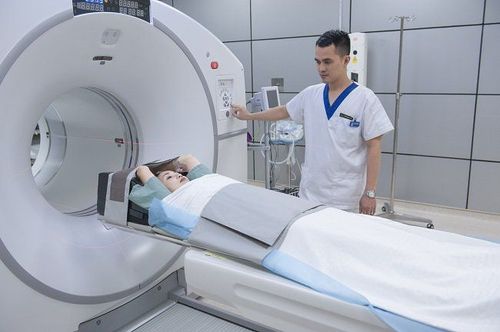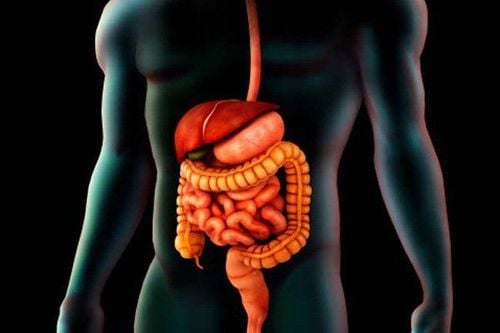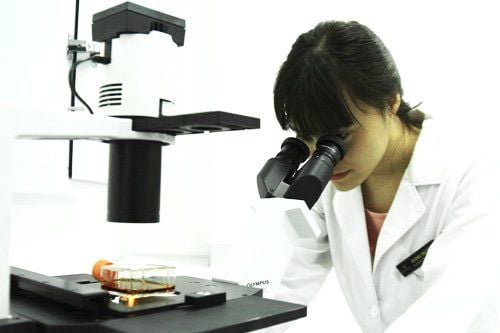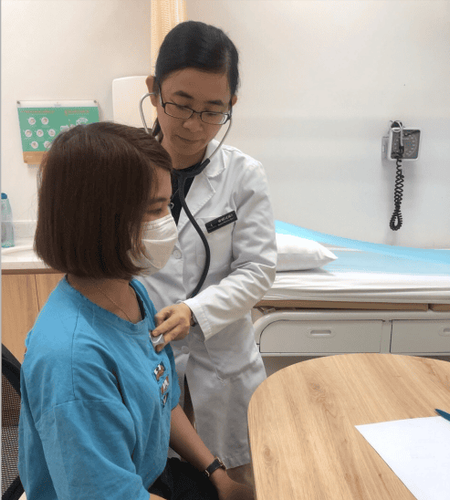This is an automatically translated article.
Periodic physical examination is the best method for each person to protect their own health. However, there is no one physical examination procedure for everyone, but depending on gender, age, personal and family health history, the doctor will advise on appropriate tests and screenings. .
1. General routine physical examination
Periodic physical examination is an effective health protection method, helping to detect serious diseases such as cancer, cardiovascular disease, diabetes, ... at an early stage for timely treatment and intervention. , before they seriously affect the body. A physical exam also helps prevent future illnesses, and your doctor and you will discuss vaccinations, exercise, dietary and lifestyle changes. , how to work to prevent possible illness.
A physical exam will help your doctor assess how your body is working. There is no one universal health checkup procedure for everyone, but depending on gender, age, personal and family health history, in addition to the mandatory items, the doctor will focus on certain areas. For example, if you have a family history of cardiovascular disease, you will be checked for blood pressure, echocardiography, blood cholesterol, blood sugar, etc.
2. What does a routine physical exam include?
A routine physical exam will typically include the following:
2.1. The doctor updates the health status of the medical examiner
To update your health status, the doctor can ask you questions about your job, diet, exercise, medications. use, do you smoke, drink excessively, have allergies, or have had any recent surgery. Your doctor will also check your immunization status and update your personal and family medical history.
If you feel that your body has signs of instability, you should clearly tell your doctor, this is very important, the doctor can prescribe more specialized examinations and specific tests to check your health situation. strong.

Bác sĩ có thể hỏi những câu hỏi về công việc, chế độ ăn uống...
2.2. Check vital signs
Check vital signs during physical exam including blood pressure, heart rate, respiratory rate and body temperature check.
Blood pressure: a person has normal blood pressure if the blood pressure reading is below 120/80mmHg. If the blood pressure is higher than this, depending on the blood pressure measurement, it will be classified as pre-hypertension, grade 1 hypertension, grade 2 hypertension,... Heart rate: normal human heart rate from 60- 100 beats/min. However, many healthy people still have a heart rate slower than 60 beats per minute. Breathing rate: A healthy person normally has a breathing rate of 12 to 16 breaths per minute. People who breathe more than 20 times per minute can have cardiopulmonary diseases. Body temperature: normal body temperature is around 37 degrees Celsius (or (8.6 degrees Fahrenheit), but sometimes a normal person's body temperature can be slightly higher or lower. body: your doctor can gather a great deal of information about your health by looking at you and talking to you, is it easy for you to get up and walk?Does your skin look healthy? Your reaction to talking also reflects your agility and memory. heart murmur or other signs that suggest you have a heart problem , laryngopharyngeal stridor,..maybe your lungs are having problems.General head and neck exam: your doctor may ask you to open your mouth wide (say “ah”) to see your throat and tonsils. The doctor will also care close teeth and gums to assess oral health. In addition, the doctor will perform a general examination of the ears, nose, sinuses, eyes, lymph nodes, thyroid gland, and carotid arteries. Abdominal exam: The doctor may use techniques such as percussion, palpating your abdomen to detect liver size and presence of abdominal fluid, listening to bowel sounds with a stethoscope,... Neurologic examination: to evaluate nerve health, nerve control ability to muscles, nerve reflexes, ability to keep balance,... Dermatological examination: to detect abnormalities in skin, nails, abnormalities This often may be due to a dermatological condition or it may be a sign of a disease in another part of the body.

Qua nghe tim, bác sĩ có thể phát hiện nhịp tim không đều, tiếng thổi của tim hoặc các dấu hiệu khác nghi ngờ
2.3.1. Men's specific physical exam
For men, a physical exam may also include:
Testicular exam: the doctor examines the testicles for swelling, pain, or change in size, ... to detect testicular diseases such as orchitis, epididymitis, testicular torsion, testicular cancer,... Penile examination:, doctors can detect men with diseases sexually transmitted disease through warts or ulcers on the penis Prostate exam: the doctor will insert a finger into the rectum to examine the prostate gland to look for signs of conditions such as an enlarged prostate, Prostatitis, prostate cancer,... Inguinal hernia examination: the doctor will wear gloves to examine the weak spot in the abdominal wall between the intestines and the scrotum to detect the presence of a hernia mass or not. , how is density of hernia mass, stretch or not,... 2.3.2. Periodic physical examination for women only
Breast examination: the doctor will check the breasts, nipples, lymph nodes in the underarm area,... to detect breast diseases early, especially breast cancer. Pelvic gynecological examination: includes examination of the vulva, vagina, cervix, uterus and ovaries to detect gynecological infections, diseases of the female genital organs. Pap tests and HPV tests may be ordered to screen for cervical cancer.

Phần khám thể chất định kỳ dành riêng cho nữ
2.4. Laboratory tests
Commonly ordered tests performed during a routine physical exam include:
Complete blood count tests Blood biochemistry tests Urine tests In addition, the American Heart Association recommends Reporters should have their cholesterol tested every four to six years. However, if you have risk factors for cardiovascular disease, your doctor will order blood cholesterol testing more often.
If you are overweight or have risk factors for diabetes, your doctor will order a blood sugar test. The American Diabetes Association recommends that all adults after age 45 have their blood sugar checked periodically, regardless of weight.
4. Some notes in routine physical examination
Routine colorectal cancer screening should begin at age 50. If there is a family history of colorectal cancer, screening should be done earlier.
For women, after the age of 40, breast cancer screening should begin. The American Cancer Society recommends that women aged 40-44 have a mammogram to screen for breast cancer. Women 45-55 years old should have a mammogram every year. Women 55 and older can switch to mammograms every two years or can continue yearly screening.
Women should start having bone density screening during routine physical examination when they are over 65 years old. However, if nutrition is inadequate, sedentary lifestyle should have bone density screening earlier.
People aged 55-80 who have smoked for many years should have a lung CT scan every year to screen for lung cancer.
Hepatitis C is an infectious disease that can cause severe liver damage. There is currently no vaccine for hepatitis C, so everyone is recommended to have a blood test to screen for hepatitis C.
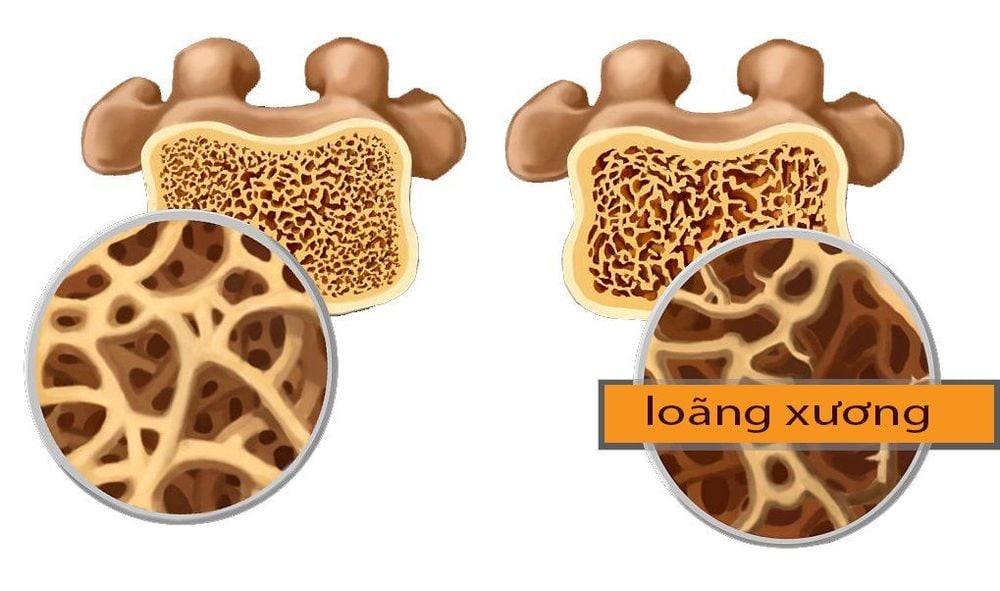
Nên bắt đầu khám sàng lọc ung thư đại trực tràng định kỳ khi bước qua tuổi 50. Nếu gia đình có tiền sử ung thư đại trực tràng, nên được khám sàng lọc sớm hơn. Đối với phụ nữ, sau tuổi 40 nên bắt đầu thực hiện khám sàng lọc bệnh ung thư vú. Hiệp hội Ung thư Hoa Kỳ khuyên phụ nữ từ 40-44 tuổi nên chụp quang tuyến vú để tầm soát ung thư vú. Với phụ nữ 45-55 tuổi nên chụp x-quang tuyến vú mỗi năm. Phụ nữ từ 55 tuổi trở lên có thể chuyển sang chụp quang tuyến mỗi hai năm một lần hoặc có thể tiếp tục sàng lọc hàng năm. Phụ nữ nên bắt đầu khám kiểm tra mật độ xương trong kiểm tra thể chất định kỳ khi qua tuổi 65. Tuy nhiên, nếu dinh dưỡng không đầy đủ, lối sống ít vận động nên kiểm tra mật độ xương sớm hơn. Những người trong độ tuổi 55-80 đã hút thuốc lá nhiều năm nên chụp CT phổi hàng năm để sàng lọc ung thư phổi. Viêm gan C là bệnh truyền nhiễm có thể gây tổn thương gan nặng nề. Bệnh viêm gan C hiện chưa có vắc-xin phòng ngừa, do đó tất cả mọi người đều được khuyến cáo nên xét nghiệm máu để sàng lọc viêm gan C.
5. What preparation is needed for a routine physical exam?
You don't usually need to prepare for a routine physical exam unless your doctor orders a fasting blood sugar test. If you are given this test, you will need to fast for 8 hours before the test.
In order for the physical examination to take place quickly and smoothly, you can prepare a number of issues to discuss with your doctor in advance, such as:
Unusual symptoms of the body recently Medicines you are taking foods, drugs you are allergic to, devices you are using on your body (pacemaker,...) Results of tests you have had recently Questions you You can ask your doctor during a routine physical exam such as:
What screening tests should your age have? What vaccines do you need? Is there anything in your family health history that increases your risk of certain diseases? What lifestyle changes, nutrition, etc. can you make to improve your health. People with health have hope, people with hope have everything. Periodic physical examination is the best method for each person to protect their own health. Prevention is always easier and more effective than cure. Through periodic physical examination, diseases and disease risks are detected at an early stage, timely treatment helps to bring high efficiency, less risk of complications, and saves time and money.
Vinmec Health System has long been famous for its modern facilities, outstanding standards, high quality human resources, and is performed by well-trained experts and doctors in the industry. both at home and abroad. Besides, to meet the needs of examination, treatment, diagnosis and prevention of diseases, Vinmec now also deploys many convenient medical services that are satisfied by many customers.
Accordingly, Vinmec International General Hospital has been and continues to invest in renovating modern equipment, and at the same time applying science, technology, and the latest medical treatments to treatment. Therefore, Vinmec International General Hospital is considered as an international standard medical care address in Vietnam.
Currently, Vinmec is implementing a lot of periodic health checkup packages suitable for each age, gender and individual needs of customers with very favorable price policy, including:
General health checkup package Work permit- issue work permit Child health check-up package Standard general health check-up package Special general health check-up package VIP general health check-up package Diamond general health checkup package Advantages when At Vinmec, customers will be screened and screened by a system of modern equipment to help support the best diagnosis today such as PET/CT, MRI, CT 640, ultrasound machine system. The world's leading advanced sound system, international standard laboratory system,... After a general examination, if any diseases are detected, customers can use services from other specialties at the hospital. hospital with outstanding quality of treatment.
References: healthline.com, webmd.com




